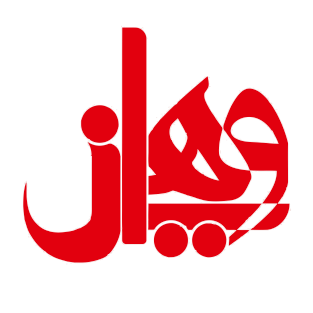کتاب Cognitive-Behavioral Techniques and Improvement of Female Orgasmic Disorder (FOD)
۵۲۲,۰۰۰ تومان قیمت اصلی: ۵۲۲,۰۰۰ تومان بود.۱۹۱,۴۰۰ تومانقیمت فعلی: ۱۹۱,۴۰۰ تومان.
| تعداد صفحات | 115 |
|---|---|
| شابک | 978-620-3-91105-3 |
| انتشارات |

کتاب Cognitive-Behavioral Techniques and Improvement of Female Orgasmic Disorder (FOD) – رویکردهای شناختی-رفتاری برای بهبود اختلال ارگاسمیک در زنان
کتاب Cognitive-Behavioral Techniques and Improvement of Female Orgasmic Disorder (FOD) اثری علمی و کاربردی است که به بررسی اختلال ارگاسمیک زنان و راهکارهای درمانی بر پایه تکنیکهای شناختی-رفتاری میپردازد. این کتاب به شیوهای جامع و علمی به ارائه اطلاعات دقیق درباره این اختلال و نحوه مدیریت و درمان آن میپردازد.
درباره کتاب Cognitive-Behavioral Techniques and Improvement of Female Orgasmic Disorder (FOD)
این کتاب به طور خاص به موضوع اختلال ارگاسمیک در زنان (FOD) میپردازد که یکی از مسائل مهم در حوزه سلامت جنسی زنان بهشمار میآید. نویسنده با بهرهگیری از رویکردهای شناختی-رفتاری، به بررسی عوامل روانشناختی و جسمانی این اختلال پرداخته و تکنیکهای عملی برای بهبود آن ارائه میکند. این اثر به خوانندگان کمک میکند تا شناخت عمیقتری از این مسئله پیدا کرده و ابزارهای علمی لازم برای درمان آن را در اختیار داشته باشند.
موضوعات کلیدی کتاب
- تعریف اختلال ارگاسمیک زنان: معرفی علائم، عوامل و اثرات روانشناختی این اختلال.
- رویکردهای شناختی-رفتاری: تکنیکهای درمانی موثر بر اساس تغییر الگوهای فکری و رفتاری.
- آموزش مهارتهای ارتباطی: کمک به بهبود روابط میان زوجها و کاهش عوامل استرسزا.
- مدیریت استرس و اضطراب: راهکارهای کاهش اضطرابهای مرتبط با عملکرد جنسی.
- مطالعات موردی: تحلیل نتایج درمانهای موفق بر اساس تکنیکهای مطرحشده.
ویژگیهای برجسته کتاب Cognitive-Behavioral Techniques and Improvement of Female Orgasmic Disorder (FOD)
- رویکرد علمی و مستند: ارائه یافتههای پژوهشی و تجربی برای اطمینان از اثربخشی روشها.
- کاربردی و قابل اجرا: ارائه تکنیکهای ساده و موثر برای درمان اختلال.
- تمرکز بر سلامت جنسی زنان: پرداختن به یکی از جنبههای مهم و کمتر مورد توجه سلامت زنان.
- پشتیبانی از زوجها: ارائه راهکارهایی برای بهبود ارتباط و حمایت متقابل میان زوجین.
چرا کتاب Cognitive-Behavioral Techniques and Improvement of Female Orgasmic Disorder (FOD) را بخوانید؟
این کتاب برای کسانی که به دنبال درک بهتر و علمی از اختلال ارگاسمیک زنان هستند، یک منبع ارزشمند است. با ارائه تکنیکهای شناختی-رفتاری، این اثر میتواند به متخصصان حوزه سلامت، زوجها و زنان درگیر با این اختلال کمک کند تا بهبود قابل توجهی را تجربه کنند.
مخاطبان کتاب Cognitive-Behavioral Techniques and Improvement of Female Orgasmic Disorder (FOD)
- متخصصان سلامت جنسی: رواندرمانگران، مشاوران و پزشکانی که در حوزه سلامت جنسی فعالیت میکنند.
- زوجها: افرادی که به دنبال بهبود کیفیت روابط و رفع مشکلات جنسی هستند.
- علاقهمندان به سلامت روان: کسانی که به مطالعات و موضوعات مرتبط با روانشناسی جنسی علاقه دارند.
سفارش کتاب Cognitive-Behavioral Techniques and Improvement of Female Orgasmic Disorder (FOD)
برای خرید این کتاب و آشنایی با تکنیکهای علمی و عملی برای بهبود اختلال ارگاسمیک در زنان، به بخش فروشگاه سایت مراجعه کنید یا با ما تماس بگیرید. این کتاب ابزاری موثر برای ارتقای سلامت جنسی و روانی زنان است.
پرسش و پاسخ در مورد کتاب “Cognitive-Behavioral Techniques and Improvement of Female Orgasmic Disorder (FOD)”
۱. کتاب “Cognitive-Behavioral Techniques and Improvement of Female Orgasmic Disorder (FOD)” درباره چیست؟
📌 پاسخ: این کتاب به تحلیل و بررسی اختلالات ارگاسمیک زنان (FOD) و راهکارهای درمانی آنها با استفاده از تکنیکهای رفتار درمانی شناختی (CBT) پرداخته است. نویسنده در این اثر، به دلایل مختلف این اختلالات جنسی، مدلهای چرخه پاسخ جنسی زنان، و روشهای مختلف درمانی شامل درمانهای شناختی-رفتاری، درمان دارویی و هیپنوتراپی اشاره میکند.
۲. این کتاب چه مباحثی را در مورد رفتار جنسی انسان و زنان بررسی میکند؟
📌 پاسخ: کتاب به بررسی رفتار جنسی انسان، به ویژه رفتار جنسی زنان، از جنبههای زیستشناختی و روانشناختی پرداخته است. مباحثی همچون تعریف رفتار جنسی، مدلهای مختلف چرخه پاسخ جنسی زنان، نظریههای مختلف رفتار جنسی، و مفاهیم مهم در رفتار جنسی را پوشش میدهد. همچنین به بررسی تئوریهای مختلف جنسی مانند فمینیستی، تکاملگرا، روانکاوی و یادگیری اجتماعی پرداخته است.
۳. نویسنده در کتاب چه روشهایی را برای درمان اختلال ارگاسمیک زنان معرفی میکند؟
📌 پاسخ: در این کتاب، نویسنده تکنیکهای رفتار درمانی شناختی (CBST) را به عنوان روشی مؤثر برای درمان اختلالات ارگاسمیک زنان معرفی میکند. این تکنیکها شامل شناسایی و تغییر افکار منفی در مورد رابطه جنسی، تمرینات جنسی، آرامسازی و کاهش اضطراب، ارتقای آگاهی بدن و بهبود ارتباطات جنسی بین زوجین است.
۴. این کتاب به بررسی چه نظریههایی در مورد رفتار جنسی انسان پرداخته است؟
📌 پاسخ: کتاب به بررسی نظریههای مختلف درباره رفتار جنسی انسان میپردازد، از جمله:
- نظریه اجتماعی-ساختاری
- نظریه فمینیستی
- نظریه تکاملی
- نظریه روانکاوی فروید
- نظریههای یادگیری اجتماعی
- نظریههای جنسی کارل گوستاو یونگ و اریک فروم
این نظریهها به توضیح عواملی چون عوامل فرهنگی، زیستی و روانی تأثیرگذار بر رفتار جنسی انسان پرداختهاند.
۵. کتاب چگونه به تشریح چرخه پاسخ جنسی زنان پرداخته است؟
📌 پاسخ: کتاب چرخه پاسخ جنسی زنان را در قالب مدلهای مختلف شامل مدل خطی، مدل دایرهای و مدل غیرخطی معرفی کرده است. نویسنده همچنین به بررسی مراحل تأمل در مراحل مختلف پاسخ جنسی مثل مرحله میل جنسی (لیبیدو)، مرحله برانگیختگی (هیجان)، و مرحله ارگاسم پرداخته است. علاوه بر این، به انواع ارگاسم و چالشها و مشکلات مرتبط با آن مانند اختلال ارگاسمیک (FOD) پرداخته است.
۶. نویسنده چه عواملی را برای بروز اختلالات ارگاسمیک زنان (FOD) بیان کرده است؟
📌 پاسخ: نویسنده در کتاب خود به بررسی عوامل مختلف تأثیرگذار بر بروز اختلالات ارگاسمیک زنان میپردازد. این عوامل شامل:
- عوامل روانشناختی مانند اضطراب جنسی، افکار منفی و دغدغههای روابط عاطفی
- عوامل جسمانی مانند اختلالات هورمونی، درد حین رابطه جنسی و نقص در حساسیت جنسی
- عوامل اجتماعی و فرهنگی مانند نگرشهای فرهنگی به جنسیت و رابطه جنسی
کتاب همچنین به بررسی عوامل دیگر مانند تأثیرات منفی رابطههای پیشین و استرسهای زندگی روزمره بر بروز اختلالات جنسی پرداخته است.
۷. این کتاب چه روشهایی برای درمان اختلالات جنسی عمومی پیشنهاد میکند؟
📌 پاسخ: در کتاب، علاوه بر تکنیکهای شناختی-رفتاری (CBST)، درمانهای مختلف دیگری نیز برای اختلالات جنسی پیشنهاد شده است که شامل:
- هیپنوتراپی
- درمان تحلیلی جنسی
- درمان دارویی
- درمان گروهی
- درمانهای هورمونی
- استفاده از وسایل مکانیکی
- بیوفیدبک
این روشها به درمان انواع اختلالات جنسی زنان، از جمله اختلالات میل جنسی، اختلالات برانگیختگی و اختلالات ارگاسمیک کمک میکنند.
۸. کتاب برای چه کسانی مناسب است؟
📌 پاسخ: این کتاب به ویژه برای متخصصان سلامت جنسی، روانشناسان بالینی، مشاوران خانواده، و افرادی که به درمان اختلالات جنسی زنان و تکنیکهای شناختی-رفتاری علاقه دارند مناسب است. علاوه بر این، این کتاب برای محققان و دانشجویان روانشناسی و سلامت جنسی نیز منبعی غنی از اطلاعات است.
۹. این کتاب چه نکات مهمی درباره درمان اختلالات جنسی زنان دارد؟
📌 پاسخ: این کتاب به طور جامع به بررسی و درمان اختلالات جنسی زنان میپردازد. نویسنده علاوه بر معرفی تکنیکهای شناختی-رفتاری، به بررسی عوامل مختلف مؤثر بر اختلالات جنسی و روشهای درمانی برای ارگاسمیک اختلالات (FOD) پرداخته است. او همچنین به تحلیل نقش فرهنگ، روانشناسی و فیزیولوژی در شکلگیری این اختلالات و ارائه راهکارهای درمانی متناسب با شرایط فردی زنان اشاره میکند.
📚 کتاب “Cognitive-Behavioral Techniques and Improvement of Female Orgasmic Disorder (FOD)” یک منبع علمی و کاربردی برای متخصصان و افراد علاقهمند به درمان اختلالات جنسی زنان است که به ارائه روشهای مؤثر در بهبود روابط جنسی و ارتقای سلامت روانی پرداخته است.
| تعداد صفحات | 115 |
|---|---|
| شابک | 978-620-3-91105-3 |
| انتشارات |
محصولات مشابه
-
کتاب The First-grade and Family
۵۲۶,۵۰۰ تومانقیمت اصلی: ۵۲۶,۵۰۰ تومان بود.۱۹۳,۰۵۰ تومانقیمت فعلی: ۱۹۳,۰۵۰ تومان. -
کتاب DoS Attacks and Intelligent Neural Network
۳۱۵,۰۰۰ تومانقیمت اصلی: ۳۱۵,۰۰۰ تومان بود.۱۵۷,۵۰۰ تومانقیمت فعلی: ۱۵۷,۵۰۰ تومان. -
کتاب Principles of Financial Management and Feasibility Studies
۵۴۴,۵۰۰ تومانقیمت اصلی: ۵۴۴,۵۰۰ تومان بود.۱۹۹,۶۵۰ تومانقیمت فعلی: ۱۹۹,۶۵۰ تومان. -
کتاب Advances in Dissimilar Welding of Steel to Copper
۳۱۵,۰۰۰ تومانقیمت اصلی: ۳۱۵,۰۰۰ تومان بود.۱۵۷,۵۰۰ تومانقیمت فعلی: ۱۵۷,۵۰۰ تومان.












